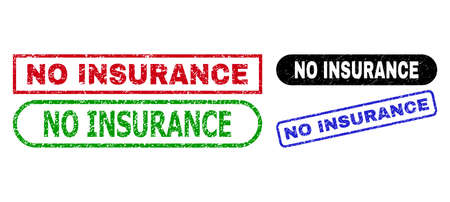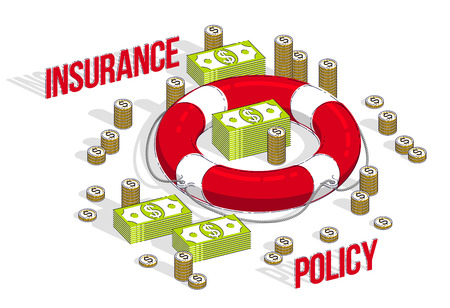1. Understanding the HO-5 Comprehensive Form
If you’re a homeowner in the U.S., chances are you’ve heard about different insurance policies—HO-3, HO-4, and so on. But the HO-5 Comprehensive Form stands out as the gold standard in home insurance, often marketed as the most extensive coverage available. So, what exactly does an HO-5 policy cover? Unlike basic forms, HO-5 offers “open perils” coverage for both your home’s structure and your personal belongings, meaning it protects against all risks except those specifically excluded in the policy. This is a key differentiator from an HO-3 policy, which typically only provides open peril coverage for the structure and named perils for contents. With an HO-5, you’re getting broader protection for high-value items like electronics, jewelry, and collectibles—something especially important if you work from home or own valuable business equipment. For self-employed individuals or homeowners with unique assets, this comprehensive approach can be a game-changer in risk management. The HO-5 is positioned as premium coverage for those who want to minimize surprises when filing a claim and maximize peace of mind. But does this extra layer of protection justify the higher price tag? That’s where understanding the form’s distinct features and benefits becomes essential.
Key Differences: HO-5 vs. HO-3 and Other Forms
When it comes to homeowners insurance, many people default to the standard HO-3 policy without realizing that an HO-5 comprehensive form can offer enhanced protection—albeit at a higher premium. To make an informed decision, its crucial to understand how these policies differ, especially regarding personal property coverage and the claims process. Heres a breakdown of the most important distinctions:
| Policy Type | Dwelling Coverage | Personal Property Coverage | Perils Covered | Claims Process |
|---|---|---|---|---|
| HO-3 (Special Form) | Open-peril (covers all risks unless excluded) | Named-peril (only specific risks listed are covered) | Broad but with exceptions for belongings | Burden on homeowner to prove peril was covered for personal property claims |
| HO-5 (Comprehensive Form) | Open-peril (covers all risks unless excluded) | Open-peril (covers all risks unless excluded) | Most comprehensive for both structure and belongings | Easier claims; insurer must prove exclusion applies, not homeowner |
| Other Forms (e.g., HO-1, HO-2) | Named-peril (basic or broad list of covered risks) | Named-peril (basic or broad list of covered risks) | Limited; usually for older or lower-value homes | Strictly limited to listed perils; often less favorable claims process |
The Personal Belongings Advantage
The biggest draw of the HO-5 is its open-peril coverage for personal belongings. Unlike the HO-3, which only covers your possessions against specifically named threats like fire or theft, the HO-5 protects against almost any unexpected event unless it’s explicitly excluded in the policy documents. This means fewer gray areas and less chance of a denied claim due to technicalities.
Smoother Claims Process
If you ever need to file a claim, the difference in claims handling can be significant. With an HO-3, you bear the responsibility of proving that your loss falls under a covered peril. With an HO-5, the burden shifts to your insurer—they must demonstrate that the cause of loss is specifically excluded. For self-employed homeowners who can’t afford downtime or drawn-out disputes, this streamlined process can be invaluable.
Bottom Line: Coverage Clarity and Confidence
The choice between HO-3 and HO-5 boils down to your appetite for risk and desire for peace of mind. If you have high-value personal property or simply want fewer headaches during a claim, the broader protections of an HO-5 may justify its higher premium.

3. Who Typically Benefits Most from HO-5 Coverage?
HO-5 policies are not one-size-fits-all, and their comprehensive protection comes at a price—so who really gets the most value out of this coverage? In the U.S., HO-5 is best suited for homeowners with high-value homes, expensive personal possessions, or unique risk factors that make standard coverage feel a bit too basic.
For example, if you’ve invested in a newly built home in a booming neighborhood—think Austin tech hubs or Silicon Valley suburbs—the replacement cost can be steep. HO-5 covers your property on an open perils basis, meaning it protects against almost every cause of loss unless specifically excluded. This is crucial for those who want to avoid gaps when disaster strikes.
Also, Americans who own significant jewelry collections, high-end electronics, luxury furniture, or even valuable art often find HO-5 indispensable. Imagine a family in Miami with designer interiors and smart home features; the broad personal property protection under HO-5 ensures these assets are covered for virtually any sudden event—not just named perils like fire or theft.
It’s also popular among self-employed professionals and business owners working from home. If your work relies on top-tier computers or specialized equipment, the higher limits and fewer restrictions on claims help keep your livelihood protected.
In short, if you’re a homeowner who values peace of mind over saving a few bucks on premiums—and you have a lot to lose—an HO-5 policy might be the smarter risk management move.
4. Pros and Cons of Upgrading to HO-5
When considering whether to upgrade to the HO-5 comprehensive form, it’s essential for homeowners to weigh both the significant advantages and the potential downsides. Below is a breakdown that can help you make an informed decision tailored to your personal risk profile and financial situation.
| Pros | Cons |
|---|---|
| Broader protection: HO-5 policies typically cover your home and personal belongings on an open-perils basis, meaning almost any cause of loss is included unless it’s specifically excluded. | Higher premiums: You’ll generally pay more for this level of coverage compared to standard HO-3 policies, which may not fit every homeowners budget. |
| Simplified claims process: With fewer exclusions and broader definitions, HO-5 claims are often less stressful and more straightforward to navigate, reducing disputes with insurers. | Stricter underwriting requirements: Insurers may require more detailed inspections or limit availability based on the age or location of your property, making qualification harder for some homeowners. |
| Replacement cost coverage: Most HO-5 policies reimburse losses at replacement value rather than actual cash value, meaning you’re less likely to face out-of-pocket costs after depreciation. | Possible over-insurance: Some homeowners might end up paying for protections they don’t necessarily need, especially if their risk exposure doesn’t justify such a comprehensive policy. |
Key Takeaway: If you’re looking for peace of mind and want minimal hassle in the event of a claim, the HO-5 could be worth the extra premium—especially if you own high-value items or live in an area prone to unpredictable risks. However, it’s crucial to assess whether your home and personal situation truly demand this level of coverage, or if a standard policy would be sufficient without stretching your insurance budget. As with any insurance decision, balancing cost against real-world risks should guide your choice.
5. Cost Considerations: Is the Extra Premium Justified?
When considering an HO-5 comprehensive form, one of the main concerns for homeowners—especially those who value sound risk management—is whether the higher premium is truly worth it. The cost of an HO-5 policy can be significantly more than standard HO-3 coverage, sometimes by hundreds of dollars annually. But is this extra investment justifiable for your unique situation? Start by assessing your personal risk profile: If you own high-value personal property, have recently renovated your home, or live in an area prone to unique risks, the broader protections and easier claims process of HO-5 may align with your needs. For self-employed individuals or families with busy lifestyles, time spent haggling over claims or worrying about gaps in coverage can be a hidden cost; paying more upfront could save stress and financial loss down the line. However, if your possessions are modest or you’re comfortable with more exclusions and potential out-of-pocket expenses, an HO-3 might suffice. Future needs also play a role—are you planning upgrades, acquiring valuables, or expecting life changes that will increase your coverage requirements? Ultimately, the decision comes down to how much peace of mind you place on comprehensive protection versus what fits comfortably within your budget. Weighing these factors in the context of American homeownership, where property values and lifestyles can vary dramatically from region to region, will help clarify whether the extra HO-5 premium aligns with both your current circumstances and long-term security goals.
6. Risk Management Tips for Homeowners Choosing Coverage
For self-employed homeowners and those who approach insurance with a risk management mindset, the HO-5 comprehensive form can offer robust protection—but only if leveraged wisely. Here are targeted strategies to maximize your coverage benefits, reduce premiums, and safeguard your assets:
Bundle Your Policies for Savings
Combining your HO-5 policy with auto or business insurance under the same carrier often unlocks multi-policy discounts. This not only streamlines your coverage but can also result in lower overall costs—an especially valuable move for self-employed individuals juggling multiple policies.
Increase Your Deductible Strategically
A higher deductible means you shoulder more risk upfront in the event of a claim, but it usually translates to a lower premium. Evaluate your cash reserves and risk tolerance; if you have the financial buffer, consider raising your deductible to balance immediate savings with long-term protection.
Conduct Regular Asset Inventories
HO-5 policies cover personal belongings at replacement cost. Documenting your possessions—especially high-value items like laptops, cameras, or specialized equipment used in your self-employed business—ensures accurate coverage and smoother claims processing. Update this inventory annually or after major purchases.
Invest in Home Security Upgrades
Enhanced security measures such as smart alarms, surveillance systems, and reinforced entry points not only deter theft but may also qualify you for premium discounts. Check with your insurer about approved upgrades that can cut costs while reducing risk exposure.
Customize Endorsements for Business Assets
If you run a home-based business, standard HO-5 coverage might not fully protect work-related equipment or inventory. Consider endorsements tailored to home office or business property to close potential gaps and ensure full asset protection without overpaying for unnecessary extras.
Review and Adjust Coverage Annually
Your insurance needs evolve—especially if youre self-employed or invest in home improvements. Schedule yearly reviews with your agent to align your policy with current risks, asset values, and life changes. Proactive adjustments help prevent costly surprises and keep your premium aligned with actual needs.
By approaching HO-5 coverage with a proactive, risk-managed strategy, you can secure comprehensive protection without overspending. Prioritize flexibility, customization, and regular reassessment to stay ahead of potential threats—and keep both your home and business on solid ground.


